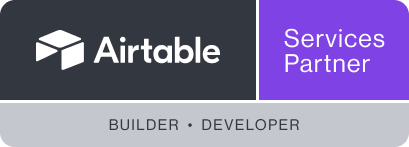The way we work is largely unproductive and unsustainable. And our communication habits – and the “e-mail” tool – play a major role.
Let’s be honest – we all use emails hundreds of times a day – and feel stressed, annoyed and unproductive as a result. Worse still, notifications on PCs and smartphones mean that emails constantly distract us from our actual work. The peak is reached when emails (but also MS Teams or Slack channels) are used to organise entire projects and tasks.
Unfortunately, this is the norm in most companies. Why is this a problem?
Information and emails have no contextual reference – you have to painstakingly set up folders in Outlook to get some structure. Information such as attachments, links to folders and tasks are hidden in the mountains of messages.
And finally, you don’t have the choice of whether you want to follow a conversation or not – colleagues simply put you on CC and, hey presto, you have another email chain in your inbox
This has been proven by numerous studies. In the annual Asana “Anatomy of Work Report” (1), the extent of this is made clear by the figures: every week, employees lose an average of almost three hours in unnecessary meetings. They are bombarded with countless emails every day. Every hour, their attention is divided between more than 15 tools that they have to constantly switch between. There is already talk of an “appocalypse”.
Ultimately, companies lose extremely valuable time as a result, as employees are constantly in hyperactive working mode and productivity drops.
– Employees are constantly interrupted
– Projects take much longer than planned
– The ability to concentrate decreases rapidly
– Ultimately, this way of working also leads to burnout and stress-related illnesses
Why we have abolished e-mails
The way most organisations work with emails creates stress, chaos and makes employees unproductive and demotivated. That’s why we at BridgeFlow have consistently worked to reduce and in some cases even completely eliminate emails.
Work management instead of e-mail
With BridgeFlow, no more e-mails are written internally. That’s right: 0 internal emails per day! Instead of emails, we rely on the leading work management tool Asana – and have positioned it as a central collaboration hub.
Imagine a platform on which all information, tasks, attachments, progress, KPIs etc. are available at a glance – and all employees communicate there – always in the right context and asynchronously – and can focus on the important, correct information and thus concentrate on the actual work. The effects are immediately measurable:
– No internal e-mails
– Drastic reduction of meetings
– Increased productivity
– Clarity and transparency about our projects at all times
But that’s only one piece of the puzzle. That’s why I would now like to outline the four key steps that every company can take to reduce and even eliminate the flood of emails.
First comes the realisation that things can’t go on like this. For anyone who would like to read more about this topic, I recommend the book “A world without email” by Cal Newport. [1]
According to the findings, the following points are important for working without e-mails:
- Context-based communication on a project and task basis
- Clear rules / guidelines and best cases for communication
- The right tools
- Training and change management
1. Context-based communication on a project and task basis
To get rid of internal emails, you need a place and processes that are always in the right context. This means that a task or project is provided with communication options. Excel, PowerPoint or Word are NOT suitable for this for many reasons, as they do not have project management or collaboration features. We will discuss the right tool in a moment.
Imagine you had a place where you could really see all projects, tasks, processes, KPIs, targets, etc. in one place. You could see all your projects, tasks, processes, KPIs, targets, etc. clearly organised and available at all times instead of having to jump back and forth between hundreds of Excel and PowerPoint documents in SharePoint. This is the first step – creating a central location for everything.
Now you can click into any project or task and post specific, context-based, comments, updates, references – you name it:
- a) Clear and comprehensible communication takes place
- b) colleagues can join and leave the conversation at any time without having to read through a hundred emails first
- c) Tasks arising from the conversations can be entered, assigned and tracked directly in the tool
- d) By referring to the context (project), you can find the right information directly – without having to read through hundreds of emails
And the best thing? The relevant colleagues are NOT informed directly – but when it suits you. Asynchronous. As most of us live in a hyperactive working world, everything always feels important, urgent and we immediately pause the task we are working on. Asynchronous means sitting down to a project at a self-defined time and only retrieving information when you are in that context (project A).
That sounds counterproductive at first. However, it has been proven that a focussed, single-tasking working environment is significantly more productive and people don’t burn out so easily. By having a single, context-based and asynchronous conversation, companies save a huge amount of emails, time and noticeably increase productivity.
2. The right tools
At BridgeFlow, we really tested all the tools out there. In the end, we decided in favour of the Asana tool.
We use services such as MS365 or Google Workspace for documents, data storage (SharePoint), etc. And MS Teams and Slack for ad-hoc communication. You’re probably wondering why we don’t use MS Teams for project management – it comes with chats, Planner, etc., right? That’s true, but we know from experience that the MS Suite is NOT suitable for collaboration, but for communication. This is a huge difference that many companies have unfortunately not yet realised. We have also made our own video about this. [2] [3]
Enter Asana: Asana is the leading work management tool. It is exactly the dashboard I described earlier – all projects, tasks, KPIs, goals, etc. are located here and are always available (even on mobile devices). They are located here and are always available (even on mobile devices). And: equipped with an intelligent communication function. No matter where I am, I can always communicate context-based, asynchronously, assign tasks, write project updates, etc.
Asana has a function called “Inbox” – the replacement for all internal emails – with one huge difference: all notifications are “actionable” – i.e. directly realisable. Whether it’s a comment, an update, an assigned task, an attachment or a reminder – I always have the right context assigned (project, task, etc.) and can communicate from within Asana. You may be familiar with the terms “ticket” or “cards” from tools such as Jira, Trello or Planner – in Asana, these tickets (called tasks) are not only structured much more intelligently but are supplemented by updates, information, etc. from all areas of the company.
This allows different departments to work asynchronously and context-based across time zones – breaking down silos and getting work flowing again.
In addition to the reduced flood of emails, employees gain one thing above all: clarity. Everyone knows exactly which project is where, who is responsible for what and by when, what the next steps are and where adjustments may need to be made. We explain more about the functions of Asana on our YouTube channel.
3. Clear rules / guidelines and best cases for communication
Even a tool like Asana is only as strong as its users. Some companies have developed so-called “email etiquettes” to train employees on how to communicate digitally. The same is also important for Asana.
Example: Before marking a task as completed, a comment summarising what has been done and where the result can be found is helpful. Ideally, you should also provide the link to the result (upload document or link to SharePoint). All relevant colleagues are informed via the inbox – without a single email being sent. The progress of the task can be tracked by everyone, you can also add colleagues at a later date and have AI create summaries – which also makes project reporting much easier.
4. Training and change management
For many people, the switch from hyperactive ad-hoc communication to asynchronous, context-based communication is naturally a change. And changes should ideally be accompanied by experts.
At BridgeFlow, we help companies communicate better and collaborate better every day thanks to tools like Asana. Change management, i.e. identifying the pain points (which I mentioned at the beginning of the video) and offering solutions instead of simply throwing a tool into the company, is essential.
Even if the benefits are immediately apparent on paper, change often brings resistance. However, with the right training and change management, the switch can be made quickly and effectively, usually in just a few weeks.
Conclusion
Can we do away with emails now? For the most part, yes. The flood of internal emails can be reduced to zero, and even if the number is reduced by just 50%, a lot has already been gained. E-mails are still a wonderful tool for communicating externally. Customers, applicants, etc. And even these can be integrated into tools such as Asana free of charge, so that the number of emails can be reduced here too. But that goes beyond the scope of this article.
With the right tool (Asana), accompanied by change management, companies can create context-based, asynchronous communication and collaboration – and thus regain space for focus, less stress and therefore happier employees. Projects and tasks are processed faster and more productively and the whole company feels these positive changes from day 1.
If you are now curious about how you too can get a grip on your email flood, create more productive teams and work with greater concentration – simply click on the link in the video description and we will talk together about how we can support you.
















